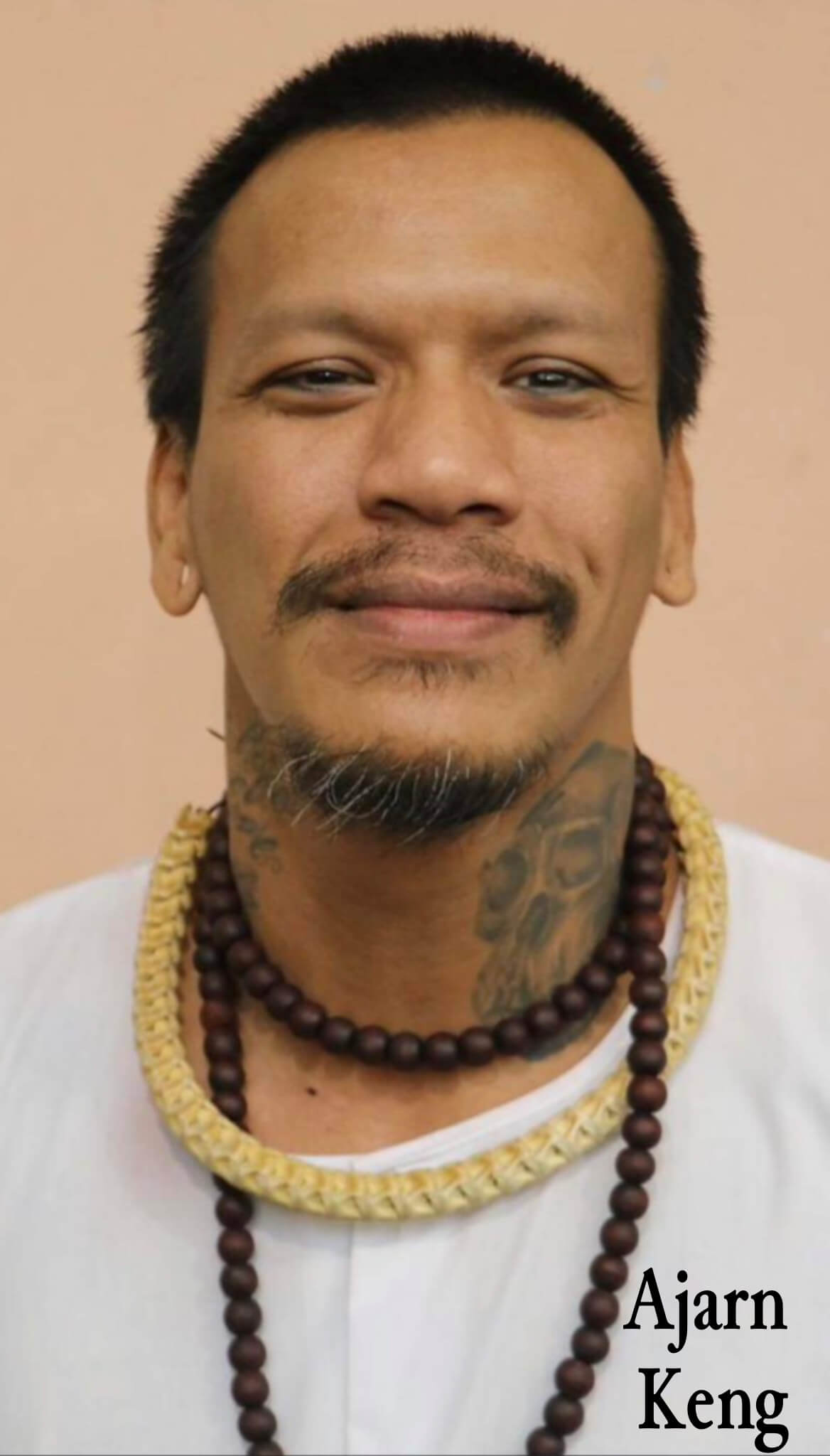The art of Sak Yant, also known as Yantra tattooing, has deep roots in Thailand’s cultural and spiritual history. It is a practice that combines elements of religion, mysticism, and art, evolving over centuries to become a significant cultural symbol.
The word “Sak” in Thai means “to tattoo,” and it refers to the traditional method of bamboo tattooing. The word “Yant” comes from the Sanskrit word “Yantra” which means “instrument” or “machine,” and it is used in Hindu and Buddhist traditions to refer to diagrams believed to harness spiritual energy.
In Thailand, Yant designs are believed to bring protection, luck, and various other benefits to the wearer. They typically include a combination of geometric shapes, animal figures, and scripts written in ancient Khmer or Pali. These designs are more than just aesthetic; they are imbued with spiritual and mystical significance. The practice of tattooing in Thailand dates back to ancient times, when tattoos were used for various purposes including spiritual protection, social status, and even medical treatments.
Early Thai warriors adorned themselves with tattoos, believing they provided protection in battle. These tattoos were not merely decorative but were thought to carry magical properties that could shield the wearer from harm. The tradition was influenced by animistic beliefs and later by Buddhism, which became the dominant religion in Thailand. Each design was uniquely chosen to offer the correct blessings and protections making the Thai army believed to be warrior ghosts. And it is worth noting that Thailand has never been conquered or colonized.
The integration of Buddhism into Sak Yant culture is profound. Buddhist monks and Brahmin priests have traditionally been the custodians of this sacred art. These practitioners are not only skilled in the art of tattooing but are also knowledgeable in the spiritual and mystical aspects of the practice. The tattoos are often blessed during the application process, with prayers and chants invoking protection and good fortune. The blessings take place by a high monk or an Ajarn (spiritual teacher).
In recent years, Sak Yants have gained international recognition, thanks in part to celebrities like Angelina Jolie, who publicly displayed her Sak Yant tattoos. This global exposure has brought a new wave of interest in the ancient practice, attracting tourists to Thailand seeking their own magical tattoos.
Despite its commercialization, the essence of Sak Yant remains deeply spiritual. Practitioners and recipients alike continue to view the tattoos as more than body art. They are seen as living talismans, a bridge between the physical and spiritual realms.
At The Bamboo Rooms, Ajarn Keng offers the full Buddhist blessing. The ritual of receiving a Sak Yant tattoo is a deeply spiritual experience. The process begins with the selection of a specific Yant design, chosen based on the individual’s personal needs or astrological elements. Then Ajarn Keng performs a series of chants and prayers, invoking protective spirits and blessings. As the tattoo is inscribed using a traditional bamboo stick, Ajarn Keng recites incantations as necessary and often quietly, imbuing the ink with sacred energy. The ritual concludes with a final blessing, where Ajarn Keng applies holy water and gold leaf to the fresh tattoo, sealing its protective and mystical properties. At The Bamboo Rooms, this ancient tradition is preserved with the utmost respect and authenticity. Ajarn Keng ensures that each Sak Yant tattoo is not only a piece of art but also a conduit of spiritual power, providing a profound and transformative experience for every client.
At The Bamboo Rooms, the blessing is fully optional as we honor and respect where each individual is on their journey to spirituality. The cost is £50 and all funds are donated to good causes and charities within Thailand.













